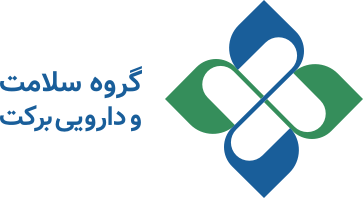
Telemedicine in Iran: Enhancing access to healthcare in rural areas
Barkat Health & Pharmaceutical Group: Telemedicine is essential in today’s world, having emerged as a vital tool for enhancing access to healthcare services over recent decades. While direct interaction between doctors and patients is crucial for effective treatment, modern technology and electronic communication have revolutionized this interaction. These innovations facilitate affordable and timely access to medical services, irrespective of location and time, thereby substantially contributing to the healthcare system’s effectiveness.
In Iran, where numerous challenges hinder healthcare access in rural and remote regions, telemedicine can play a transformative role in improving the standard of health and medical services.
What is telemedicine?
Telemedicine encompasses remote medical consultations, patient monitoring, health education, and even the execution of certain medical procedures through communication technologies such as video conferencing, phone calls, and the internet.
This technology enables doctors to connect with patients across various locations, including isolated and rural areas, providing medical services without the necessity for physical presence. With the surge in online health-related information, over 40% of internet searches pertain to health, and more than 60 million patients engage with their healthcare providers daily through online platforms and telemedicine.
Telemedicine & improving access to healthcare in Iran
Rural areas in Iran grapple with multiple healthcare challenges, including a shortage of medical professionals, inadequate access to advanced medical equipment, and significant geographical distances. These obstacles hinder timely healthcare access for rural residents, worsening their health conditions. In this context, telemedicine emerges as an effective solution to tackle these healthcare issues. Key benefits of telemedicine in enhancing healthcare access in rural Iran include:
– Reducing Travel Needs: A major hurdle for rural inhabitants is the necessity for long travels to seek medical services. Telemedicine minimizes this requirement, enabling patients to receive consultations and treatments from the comfort of their homes.
– Improved Access to Specialists: Access to medical specialists is often limited in rural regions. Telemedicine allows for direct communication with specialists in larger urban centers, ensuring that patients can benefit from expert insights and guidance.
– Enhancing Preventive Care: Telemedicine significantly contributes to preventive healthcare. Through online consultations and health education, individuals can acquire the necessary information to prevent diseases and avert more serious health complications.
– Monitoring Chronic Patients:* Chronic conditions necessitate ongoing monitoring, and telemedicine facilitates the remote supervision of patients’ health statuses. This capability enhances patients’ quality of life while reducing healthcare costs.
Successful Telemedicine Projects in Iran
Numerous successful telemedicine initiatives are currently underway in Iran, demonstrating positive effects on healthcare access in rural areas. For instance, projects in Khorasan Razavi, Sistan and Baluchestan, and Kurdistan provinces have substantially decreased the need for patient travel and improved access to specialized services.
In Khorasan Razavi, a telemedicine initiative was launched to deliver medical services to rural residents. This project includes online consultations, chronic patient monitoring, and health education, resulting in reduced travel requirements and increased patient satisfaction.
Sistan and Baluchestan, one of Iran’s most underserved provinces, faces significant healthcare challenges. A telemedicine project in this region aims to enhance access to healthcare services through remote consultations, patient monitoring, and emergency services, leading to improved healthcare quality.
In Kurdistan, a collaborative telemedicine project with the provincial university of medical sciences has been implemented. This initiative encompasses remote consultations, chronic patient monitoring, and health education, yielding notable advancements in healthcare access and patient satisfaction.
Technologies & tools used in telemedicine
Telemedicine employs various technologies and tools, each critical to enhancing medical services. These include video conferencing, patient management systems, mobile applications, and health monitoring devices. Video conferencing facilitates real-time communication between doctors and patients for necessary consultations, while patient management systems allow for the electronic storage and management of patient medical records. Mobile applications enable patients to connect easily with healthcare providers and receive essential consultations.
Limitations of telemedicine
Despite its advantages, telemedicine in Iran faces numerous challenges and limitations. A primary issue is the lack of adequate communication infrastructure in some rural areas. Without high-speed and stable internet access, providing effective telemedicine services becomes challenging. Additionally, cultural acceptance and social shifts present significant obstacles; some individuals may resist adopting new technologies and prefer traditional healthcare methods.
Public education and awareness regarding the benefits and applications of telemedicine are crucial. Without sufficient understanding, individuals may not utilize these services effectively or fully appreciate their advantages.
Proposed Solutions
– Developing Communication Infrastructure: Enhancing communication infrastructure in rural and remote areas is vital for improving access to telemedicine services. Expanding high-speed internet coverage and enhancing communication network quality can significantly improve service delivery.
– Public Education and Awareness: Raising public awareness about the benefits and applications of telemedicine is essential for increasing technology acceptance. Awareness campaigns, educational programs, and dissemination of health information can promote the use of telemedicine services.
– Government Support and Policy Development: Government backing and the formulation of supportive policies are crucial for expanding telemedicine in Iran. The government can facilitate telemedicine growth by providing financial incentives, establishing legal frameworks, and encouraging investment in the sector.
Outlook
Telemedicine can effectively improve access to healthcare services in Iran’s rural and remote areas. Despite the existing challenges, appropriate measures—such as enhancing communication infrastructure, raising public awareness, and securing government support—can foster telemedicine utilization and elevate healthcare standards.
Successful telemedicine initiatives in various provinces illustrate that this technology can significantly enhance healthcare access and increase patient satisfaction.
-
Barekat Health & Pharmaceutical Group at the 10th Iran Pharma Exhibition

-
Ali Safa visits Sobhan Oncology & Sobhan Darou
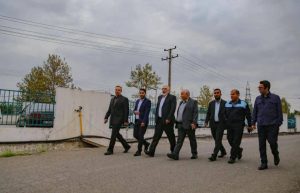
-
Pirsalehi & Safa visit Saman Daroo 8 Knowledge-based Company
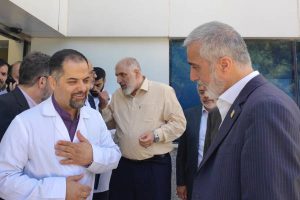
-
Barekat Managing Director Visits Samen Pharmaceutical Company

-
Honoring Pharmacists’ Day
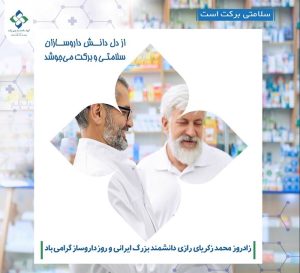
-
Barekat Top Executives Visiting to Barekat Hospital
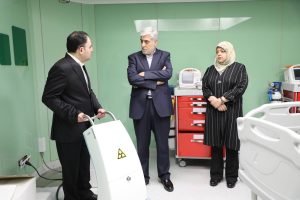
-
Alborz Darou honored as Top Exporter of Qazvin Province in 2024
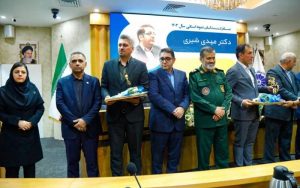
-
Footsteps & Gazes of Disease: A Revolution in Early Diagnosis

